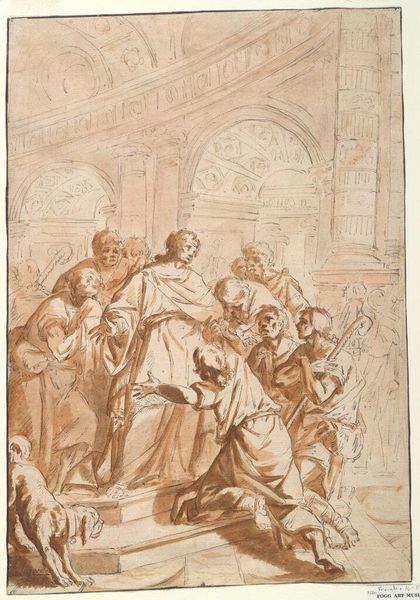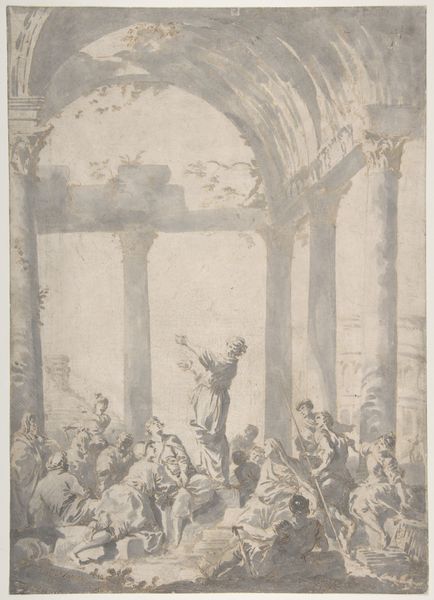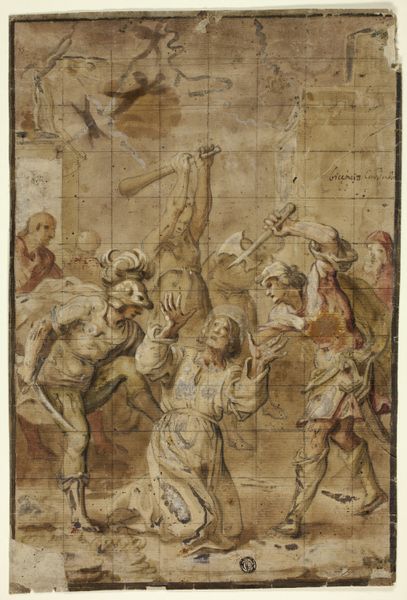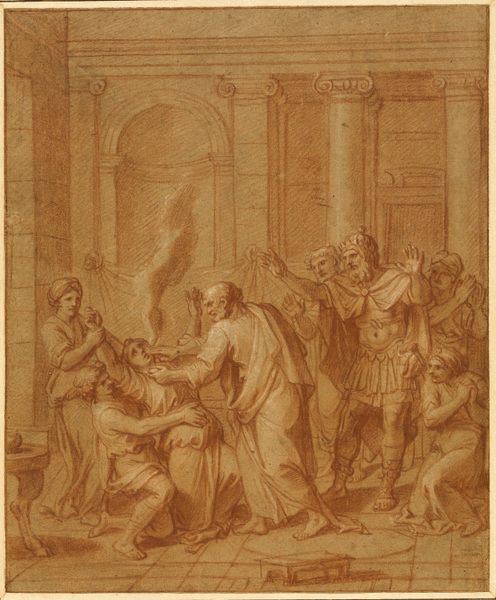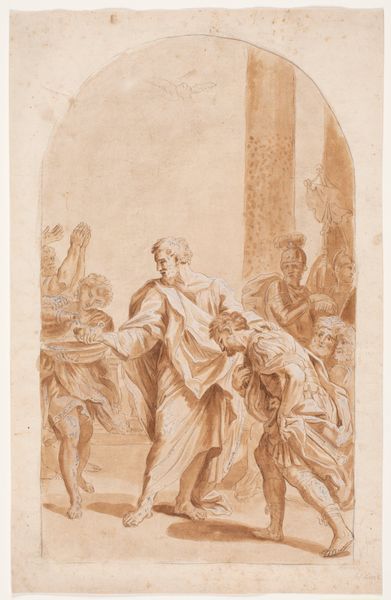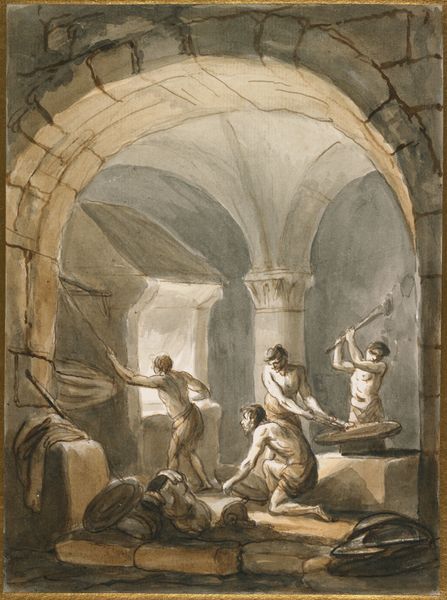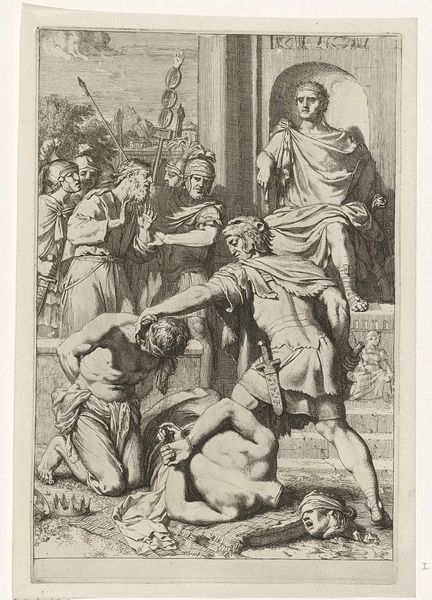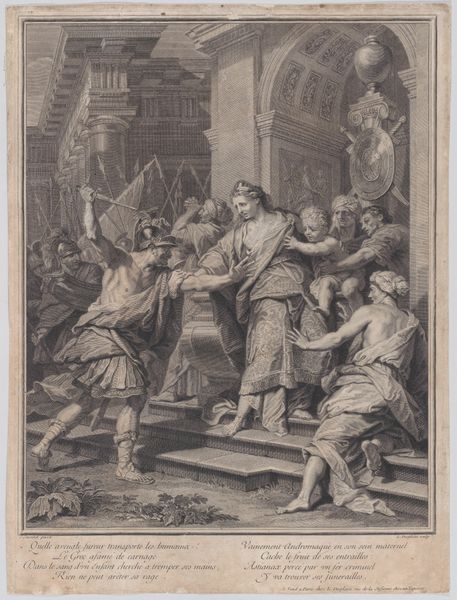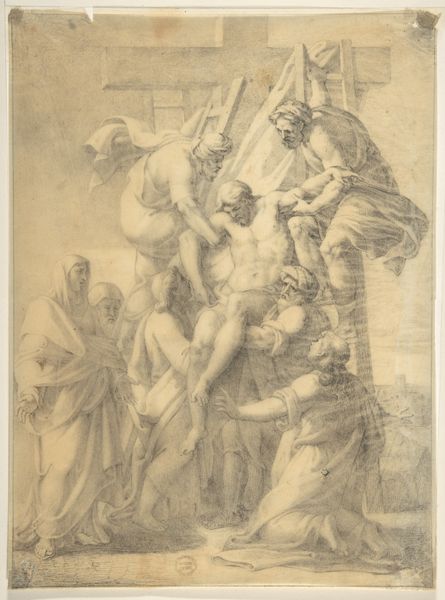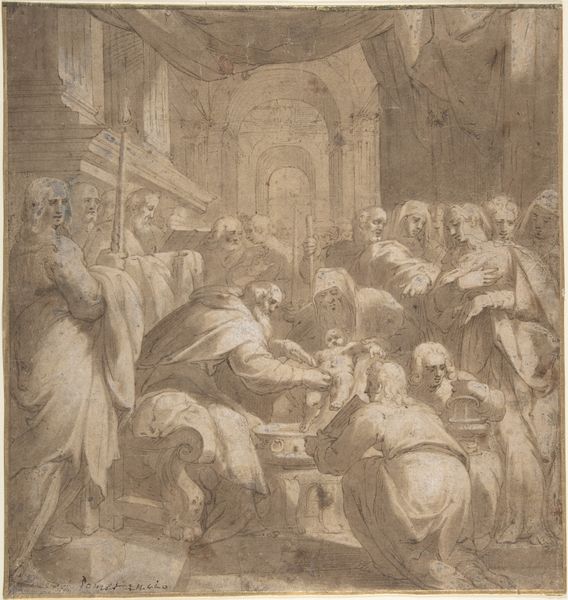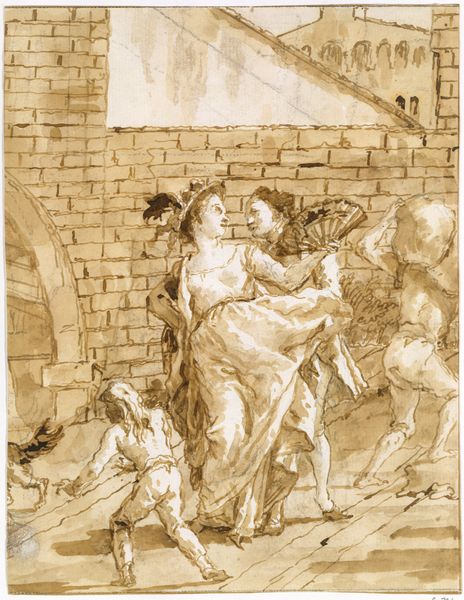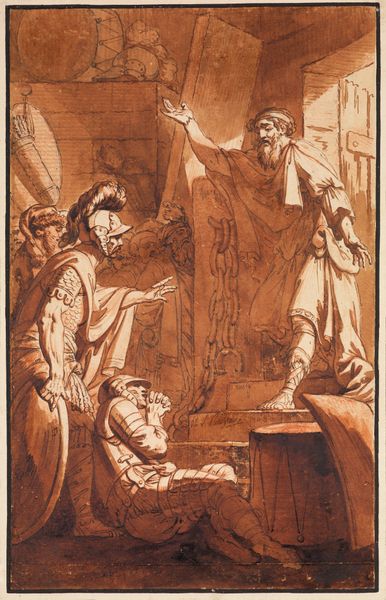
drawing, ink, charcoal
#
drawing
#
narrative-art
#
charcoal drawing
#
figuration
#
ink
#
charcoal
#
history-painting
#
charcoal
Dimensions: overall: 48.9 x 38.1 cm (19 1/4 x 15 in.)
Copyright: National Gallery of Art: CC0 1.0
Curator: This compelling drawing is Giovanni Domenico Tiepolo's "The Raising of Tabitha," created around the early 1790s using ink and charcoal. What strikes you about it? Editor: The frenetic energy! There's such a swirl of emotion captured with just line and wash. It feels almost theatrical, like a scene from a play caught mid-performance. Curator: Absolutely. Tiepolo often used theater as a lens for understanding societal narratives. This drawing depicts a miracle from the Acts of the Apostles: Saint Peter resurrecting Tabitha. Consider the social implications: here is a demonstration of divine power playing out in a community that may have relied upon her labor, an act with very real impact on its means of subsistence. Editor: It’s interesting how Tiepolo frames the scene. The weighty architecture, the gathering crowd. He's definitely building a sense of importance around the event, isn't he? Making it a public spectacle, almost, which speaks to the power of the church at the time. Were these works made for popular consumption? Curator: That's a great point. Many of his drawings were made as autonomous works of art. But given the size and handling of "The Raising of Tabitha," and Tiepolo’s close connections to printmakers, it could well be considered as something like source material intended for a larger audience. And it underscores how the art market itself dictated what forms his creative work would ultimately take. Editor: I hadn't thought of it that way. I see it more as an investigation into religious iconography. There is such a powerful tension in how a divine miracle, something otherworldly, gets portrayed using humble earthbound materials. Curator: Perhaps it's both, then. The earthy charcoals and inks used, and also its religious narrative... Together they highlight the accessibility, in process and presentation, of such spiritual moments. It all feels deeply human, grounded even in its depiction of the miraculous. Editor: Yes, definitely grounded. Looking at it, I'm struck by how Tiepolo pulls you right into the middle of the scene, the drama of a moment reshaped by art. Curator: Indeed. This examination reveals just how much the historical and material shape not only the artwork itself, but how we might interpret its significance today.
Comments
No comments
Be the first to comment and join the conversation on the ultimate creative platform.
